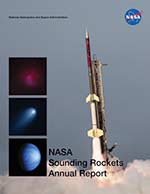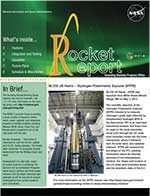
36.361, 36.362, 41.127 & 41.128 UE LEHMACHER/CLEMSON UNIVERSITY
Vorticity Experiment - VortEx
- Mission
- Vehicle
- Launch
- Photos
The science objective of the Vorticity Experiment (VortEx) is to characterize mesoscale dynamics (10-500 km) in the upper mesosphere and lower thermosphere (90-120 km), a region which also contains the Earth’s turbopause. Rocket and ground-based measurements will be combined to distinguish, on one hand, between divergence in the horizontal flow field and divergent motions, such as gravity waves, and on the other hand, vorticity in the horizontal flow field and vortical motions, such as expected to occur in quasi-stratified mesoscale turbulence. These processes are crucial for a better description of subgrid processes and eddy diffusion in global atmospheric models.
VortEx is comprised of four missions. 36.361 and 36.362 are identical payloads carrying rocket-powered ampules and canisters that release trimethyl aluminum (TMA) for wind observations. Each TMA payload will be launched with an instrumented payload, 41.127and 41.128, with instruments from Clemson University and Embry-Riddle Aeronautical University.
Salvo 1, 36.361 and 41.127, was launched on March 23, 2023. The payloades were launched two minutes apart.
Salvo 2, 36.362 and 41.128 were launched on November 10, 2024.
The two Terrier-Improved Orion payloads carry instrumentation and the two Black Brant IX payloads disperse vapor trails.
The Principal Investigator is Dr. Lehmacher/Clemson University.
The Black Brant 9 is a two stage sounding rocket with a Terrier first stage and Black Brant second stage. The Black Brant 9 can reach altitudes of about 600 km. Payloads weighing from 400 to 1200 pounds can be flown.
The Terrier-Improved Orion is also a two stage sounding rocket with a Terrier first stage and a Improved Orion second stage. The Terrier-Improved Orion is capable of reaching altitudes of about 350 km, depending on payload mass, and can carry payloads weighing 200 to 800 pounds.
Salvo 1 of the VortEx experiment was be launched from Andoya Space, Norway, on March 23, 2023, Salvo 2 was launched on November 10, 2024.


